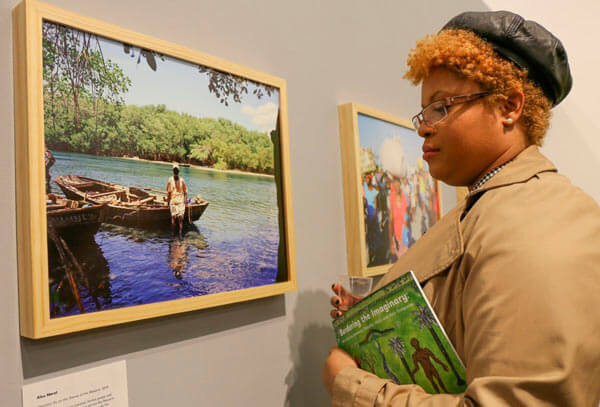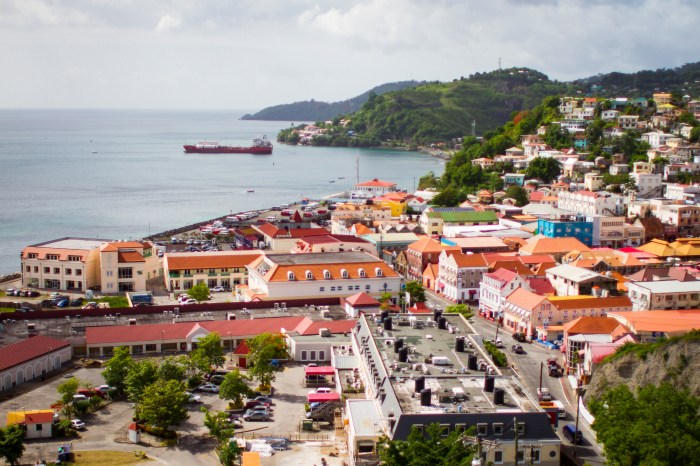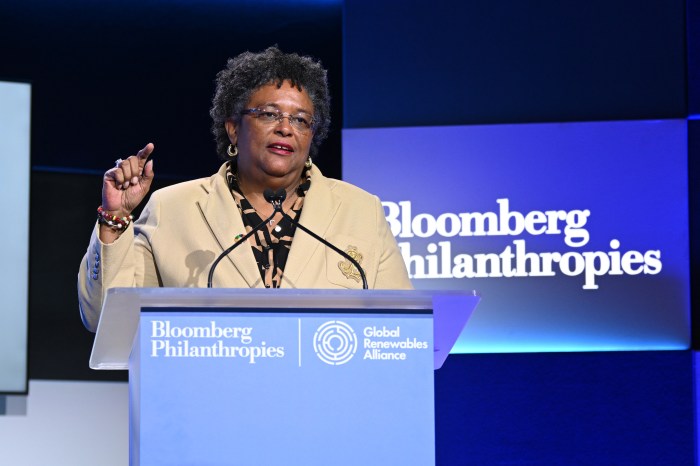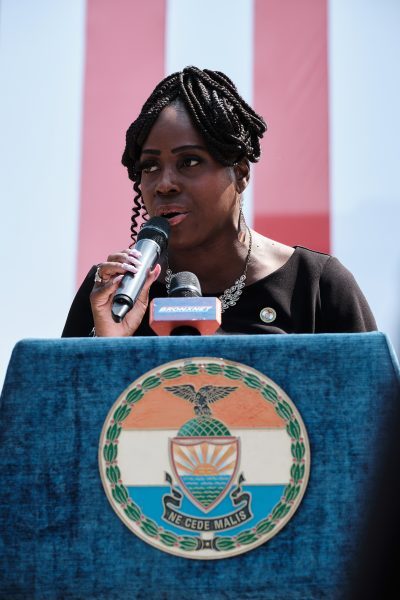On March 15, the opening of BRIC’s latest exhibition— Bordering the Imaginary: Art from the Dominican Republic, Haiti and their Diasporas attracted 900 art and culture mavens in an epic event. Locals emerged from the never-ending winter in New York to mingle with cohorts and friends while immersed in art that will be on view through April 29.
Here in downtown Brooklyn, artists from both sides of the island of Hispaniola — the landmass of Haiti and Dominican Republic — and the Diaspora are showcasing their work. It happens too infrequently on the island itself.
BRIC’s expansive high-ceilinged gallery space beautifully exhibits this multi-dimensional, thought provoking show, which includes paintings, film, photography, mixed media, and a collaborative installation by two women, one from each side of the island.
Much of the artists’ creative impulses are rooted in their home countries where this sort of collaborative production couldn’t quite be put together said Yelaine Rodriguez on a CUNY panel for curators held a couple days after the opening. Her response to this challenge a few years back was to organize a series of gallery shows entitled “La Lucha” by Haitian and Dominican artists in Washington Heights and the Bronx.
The exhibit’s curator is Abigail Dardashti Lapin, a Franco-Dominican CUNY PhD candidate in art history with previous curatorial experience with Latino art. The seeds of the grand BRIC show started as an exhibition of Diaspora art and morphed into a project of nineteen artists, 9 Haitian and 9 Dominican, of which half live on the island.
On recent related panels curator Dardashti commented that producing this show wasn’t so easy either, emphasizing how there was resistance —“it’s too political” (it’s not) or potential sponsors didn’t like the art.
This show is not afraid to explore commonalities and fissures of the two sides. The overwhelmingly positive reception indicates the importance in mounting a show like this and creating a venue for dialogue.
Many of the works incorporate historic and cultural images and references. Freddy Rodriguez’s painting “Roots” is a simple yucca, so ancient, a staple of the Taino diet and still eaten on both sides. Edouard Duval-Carrie’s vibrant colors represent an imaginary Caribbean landscape touching on the denigration of voudou, impact of European colonialism and U.S. imperialism. His painting “Hispaniola Saga: The Tigere and The Congo” is the cover of a comprehensive free catalogue that accompanies the exhibit.
Alex Morel’s photographs illustrate the actual border itself: the Massacre River, and a lone soldier guarding stone border 1 in a barren landscape. The catalogue’s back cover utilizes his photo — “Haitians crossing the northern border bridge on their way to the market on the Dominican side.”
“Memories of a Utopian Island” is the collaborative multi-media installation by Dominican-born Scherazade Garcia and Haitian-American Vladimir Cybil Charlier. It combines the practices of both artists in a piece that does not claim the sameness of each nation but rather includes unique identifications.
Docent tours on Wednesdays at 10:30 and 11:30 am and two more public programs add breadth and understanding to this exhibition.
April 4, at 7 pm, moderated by the curator, exhibition artists Patrick Eugene, ilana emilia garcia, Alex Morel, and Nugene E. Smith will speak on their work and the relationship between the two countries.
On April 28 at 4 pm, Carolle Charles will moderate four leading voices in the Haitian and Dominican diasporas in New York — Suhala Batista-Carolina, Edward Paulino, Albert Saint Jean, and Ibi Zoboi — will offer insights into their personal experiences of the relationship between the two countries.
[Essays written by the four are available at BRIC or BRICa
BRIC is also hosting an April House Party, a family-oriented day of stories, arts, and games from global island cultures, April 7 from 12-5 pm. The Haitian folkloric band Fanmi Asoto will perform at 1:30 pm.






















